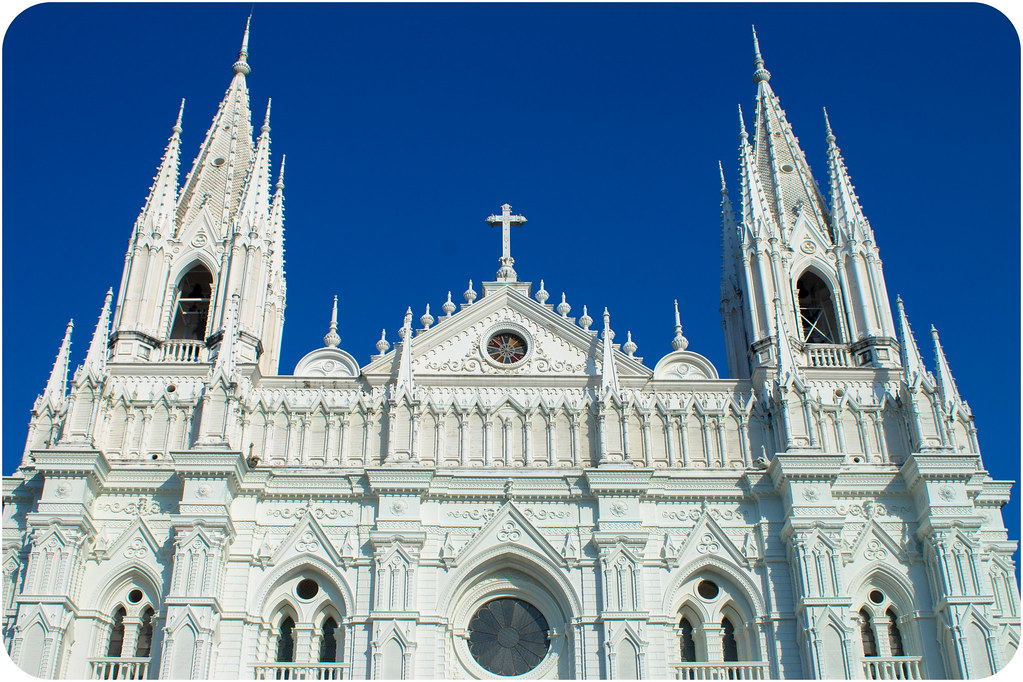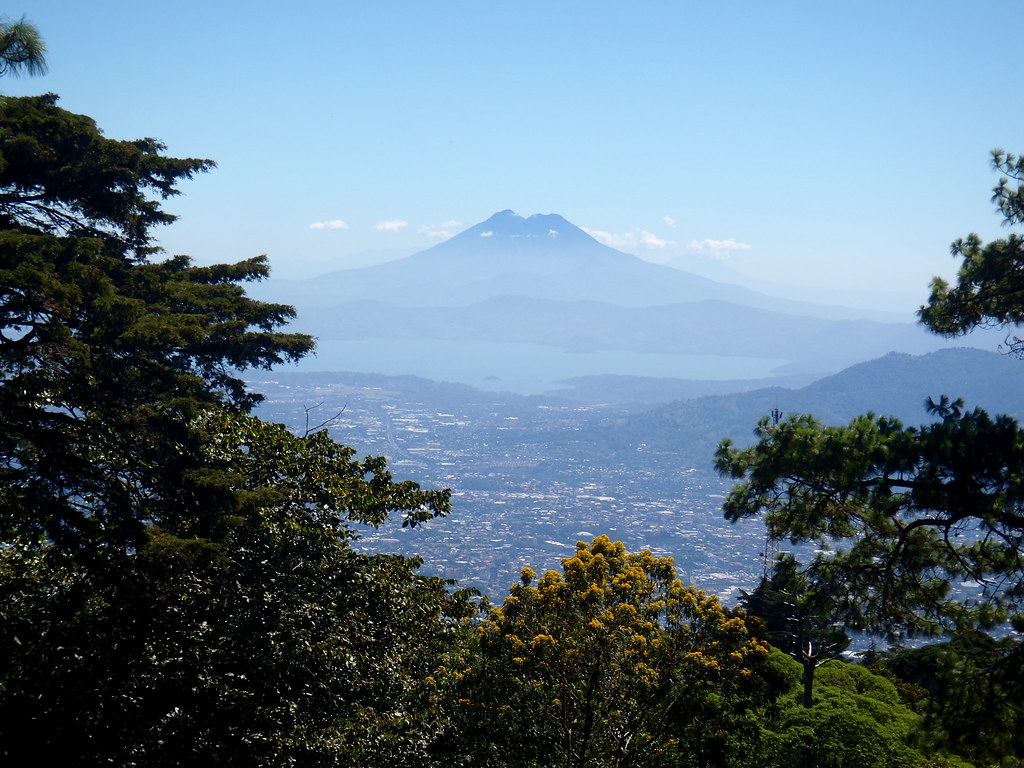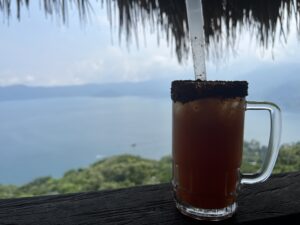
Santa Ana Cathedral
Santa Ana Cathedral is a historic church located in the heart of Santa Ana, El Salvador. The cathedral is renowned for its stunning architecture and is considered
From its volcanic landscapes to its rich history, El Salvador remains one of Central America’s most captivating destinations. As more travelers seek unique experiences beyond the typical tourist trails, this tiny nation is drawing attention with its vibrant culture and breathtaking natural wonders. Before you pack your bags and embark on an adventure to El Salvador, it’s essential to acquaint yourself with some vital information. This El Salvador travel guide aims to provide a comprehensive overview of essential things you need to know for traveling to El Salvador. Dive in, and discover what awaits you in the “Land of Volcanoes.”
Visa to El Salvador for Americans: For U.S. citizens eager to explore El Salvador, the good news is that a visa is not required for stays of up to 90 days. Instead, upon arrival, you’ll need to purchase a tourist card, typically valid for the duration of your visit. It’s always a good idea to check the latest entry requirements before traveling to ensure a smooth journey.
Language: Spanish is the official language of El Salvador. While major tourist destinations and hotels may have English-speaking staff, it’s beneficial to brush up on some basic Spanish phrases. It not only eases communication but also deepens your connection with the locals.
Culture in El Salvador: Rich in history and traditions, Salvadoran culture is a blend of indigenous, Spanish, and other influences. From the vibrant festivities like the “Fiesta de San Miguel” to the exquisite craftsmanship seen in their textiles and pottery, there’s a cultural experience awaiting every traveler. Salvadorans are known for their warmth and hospitality, making it a delightful experience for visitors to immerse themselves in the local way of life.
Currency: The official currency in El Salvador is the U.S. dollar. This simplifies transactions for American visitors, as there’s no need for currency exchanges. However, always keep small denominations handy for local purchases and tipping.
Safety in El Salvador: Safety remains a concern for many travelers considering El Salvador. While the country has made significant strides in improving security, it’s crucial to stay informed about current situations, particularly in urban areas. Stick to well-known tourist destinations, avoid traveling at night, and always keep your belongings secure. By taking standard precautions, many travelers have unforgettable and trouble-free experiences in this stunning country.
El Salvador, with its consistent tropical climate, welcomes travelers all year round. However, your travel experience may vary depending on the season, as the country has two distinct periods: the dry season (or verano) and the rainy season (or invierno). Here’s a breakdown to help you decide the best time for your visit:
Dry Season (November to April): Often regarded as the best time to visit, the dry season promises clear skies and sunny days. This period is ideal for:
Rainy Season (May to October): Also known as the green season, this period sees intermittent afternoon showers, which often cool down the otherwise warm and humid days.
Flying to El Salvador
For those keen to experience the enchantment of El Salvador, flying is undeniably the most efficient and popular method of entry from global locations. The country’s air travel infrastructure predominantly revolves around its primary international airport, connecting it to several international hubs. Here’s the detailed breakdown:
Monseñor Óscar Arnulfo Romero International Airport (SAL) – San Salvador: Situated in close proximity to the capital city, San Salvador, this is the country’s main international gateway. It accommodates a broad spectrum of flight connections from various parts of the world. (Website: Monseñor Óscar Arnulfo Romero International Airport)
Airlines that fly to El Salvador:
A range of international airlines facilitate direct routes to El Salvador, connecting this Central American destination with many cities across the globe. Here are some leading airlines:
Avianca: Being a pivotal airline in Latin America, Avianca extends comprehensive flight services to El Salvador from numerous cities spanning the continents. (Website: Avianca)
Delta Airlines: With its comprehensive network in the U.S., Delta Airlines facilitates frequent routes to San Salvador, making it a top choice for North American tourists. (Website: Delta Airlines)
American Airlines: Serving as a major link between the U.S. and global destinations, American Airlines operates dedicated flights to San Salvador from primary cities like Miami, Dallas, and more. (Website: American Airlines)
United Airlines: As another leading U.S-based carrier, United offers smooth connectivity between San Salvador and several American urban centers, such as Houston and Newark. (Website: United Airlines)
Copa Airlines: With its central hub stationed in Panama City, Copa Airlines acts as a bridge connecting El Salvador with vast regions of North, Central, and South America. It stands out as a premier choice for travelers across these territories. (Website: Copa Airlines)
With such extensive connectivity options at your disposal, accessing the diverse landscapes and cultural treasures of El Salvador has never been more straightforward. Safe travels!
Help the site out and book through our partners at Skyscanner:
By Bus: Inter-country coach services are a popular mode of transportation in Central America. These buses provide a more affordable and scenic route, traversing through various landscapes and offering a closer view of life in neighboring countries.
Tica Bus: One of the most renowned coach services, Tica Bus connects El Salvador with countries like Mexico, Guatemala, Honduras, Nicaragua, Costa Rica, and Panama. Their services are known for being punctual and comfortable. (Website: Tica Bus)
Pullmantur: Another popular bus service, Pullmantur offers comfortable and direct connections between major cities in Guatemala and San Salvador. (Website: Pullmantur)
By Cruise Ship: El Salvador’s Pacific coast is occasionally a port of call for cruise ships, allowing travelers to get a glimpse of the nation’s coastal beauty.
Acajutla Port: Located in the Sonsonate department, Acajutla is the primary seaport in El Salvador. It occasionally welcomes international cruise ships, giving passengers a day or two to explore the nearby attractions, including beaches and local towns. While it isn’t as frequent a stop as some other Central American ports, its inclusion in itineraries is growing. (Website: Acajutla Port)
Cruise Lines: Various cruise lines, such as Princess Cruises, Holland America Line, and Norwegian Cruise Line, at times include El Salvador in their Central American itineraries. It’s advisable to check with cruise operators for updated routes and schedules.
Navigating El Salvador, the smallest country in Central America, can be a smooth experience thanks to its diverse transportation options. From modern coach services to traditional methods of transit, here’s how you can explore El Salvador’s rich landscapes and culture.
Tours:
For those desiring a streamlined and immersive travel experience, organized tours stand out as a prime choice in El Salvador. This is indeed my favored way to see the country, ensuring safety and efficiency. Tours simplify your travel by providing expert guides, well-planned routes, and an opportunity to connect with fellow explorers. Among various tour operators, EC Tours is who I would recommend. They offer an array of options, ensuring a bunch of great tours and private options as well so you can maximize your El Salvador experience.
Buses:
Buses form the crux of El Salvador’s public transportation system. They efficiently connect towns, cities, and even remote areas. Here are some key bus options:
Public Buses (Colectivos): These buses run frequently within cities and towns, offering an affordable mode for short distances and daily commutes.
Intercity Buses (Pullmantur, Tica Bus): For traveling between major cities or crossing into neighboring countries, intercity buses provide a comfortable and economical choice. They offer different service tiers, catering to varied budgets and preferences.
Tourist Shuttles: For a hassle-free journey to popular tourist sites, numerous agencies offer shuttle services, ensuring comfort and convenience.
Taxis:
You’ll easily find taxis in urban centers and popular tourist spots. They provide an efficient way to navigate local destinations. While some taxis might use meters, it’s not uncommon to settle the fare upfront, especially in areas frequented by tourists. It is important that you use a taxi with an ‘A’ at the start of the license plate because that means it’s an official taxi so it’s safer.
Ride-sharing Apps:
With the global rise of ride-sharing platforms, El Salvador hasn’t been left behind. Apps like Uber have made their way into the country, offering a convenient, safe, and often more comfortable alternative to traditional taxis. These apps provide transparent pricing and can be especially handy in urban areas.
Domestic Flights:
While El Salvador is relatively small, if you’re short on time or want to avoid road travel, domestic flights can be an option, though limited. Avianca operates certain routes within the country, offering a quick means to hop between key destinations.
Car Rentals:
If you value flexibility and prefer crafting your itinerary, renting a car can be an attractive choice. Several international rental agencies, including Avis and Budget, operate in El Salvador, allowing travelers to explore at their pace. However, ensure you’re comfortable with local driving conditions and always have a current map or GPS device on hand.
Safety First: Stick to well-traveled areas, especially after dark. While El Salvador is beautiful, it has regions with safety concerns.
Travel Insurance: Always travel with insurance that covers both medical emergencies and unexpected travel interruptions.
Stay Hydrated: The tropical climate can be hot and humid, so drink plenty of water and protect yourself from the sun.
Local Cuisine: Try the national dish, pupusas, and enjoy other local specialties. Salvadoran food is rich and flavorful.
Language: Spanish is the official language. While some locals might speak English, especially in tourist areas, it’s beneficial to know basic Spanish phrases.
Cash Over Cards: While credit cards are accepted in many places, it’s advisable to carry some cash, especially when visiting smaller towns or markets. The official currency is the U.S. dollar. So skip the exchange counters and ATM fees and just bring your own cash if you are coming from the states.
Respect Local Culture: Salvadorans are known for their warmth and hospitality. Always be respectful and try to understand and respect local customs.
Bargaining: In local markets, bargaining is a common practice. However, always do it respectfully and remember that a few cents might mean a lot more to the seller than to you.
Dress Modestly: Especially when visiting religious or rural sites, it’s advisable to dress modestly to respect local customs.
Public Transport: Buses are a primary mode of transportation, but for more comfort and safety, consider using tourist shuttles, taxis or Uber, especially for longer distances.
Natural Beauty: Don’t miss out on visiting the country’s volcanoes, lakes, and beaches. El Salvador boasts a diverse range of natural attractions.
Stay Alert: Petty theft can be a concern, especially in crowded areas. Be mindful of your belongings and avoid displaying expensive items openly.
Travel Off-Peak: Consider traveling during the off-peak season to avoid large crowds and get better deals on accommodations.
Support Local: Purchase handicrafts and products from local artisans and vendors, which not only gives you a unique souvenir but also supports the local economy.
Guided Tours: For historical sites and natural attractions, consider taking a guided tour to gain deeper insights into the country’s rich culture and history.
Don’t Drink the Water: Drink bottled water and avoid tap water. Also, be cautious with ice in drinks and raw foods that might have been washed in tap water.
Travel Adapters: El Salvador uses 110V, 60Hz electricity with Type A and B sockets. Ensure you have the right adapters for your devices. So, if you are from the United States you basically won’t need an adapter.
Accommodation:
Budget: Budget accommodations, such as hostels and small hotels, usually range from $10 to $30 per night. Cities like San Salvador and Santa Ana offer affordable dormitory options or basic private rooms.
Mid-Range: Mid-range accommodations, which include boutique hotels and B&Bs, typically cost between $40 and $80 per night. These often feature private bathrooms, Wi-Fi, and breakfast.
Luxury: Luxury resorts and high-end hotels in prime locations, especially on the coast or in the capital, can range from $100 to $300+ per night. These establishments boast spacious rooms, luxurious amenities, and first-rate services.
Food:
Budget: Salvadoran street food and local comedores (small eateries) provide meals that generally range from $1 to $5. Delight in traditional items like pupusas, tamales, and yuca frita.
Mid-Range: Dining at a mid-range restaurant can cost between $7 and $20 per person. This includes places serving traditional Salvadoran dishes and some international options.
Luxury: Upscale dining at top-tier restaurants might cost $30-70+ per person. Here, you can indulge in gourmet Salvadoran cuisine, seafood, or international dishes, often accompanied by fine wines and exquisite service.
Transportation:
Public Transportation: Local buses, commonly known as “chicken buses”, are an economical mode of transportation, with fares often below $1 for short routes.
Domestic Flights: El Salvador is a relatively small country, so domestic flights are limited. However, for faster travel between select destinations, prices can vary.
Taxis: Taxi fares within cities like San Salvador are typically around $3-7 for short distances. Always agree on a fare before starting your journey, as many taxis may not use meters.
Attractions:
Natural Sites: Entrance fees to national parks or natural attractions like Coatepeque Lake or Tamanique Waterfalls generally range from $2 to $10.
Historical and Cultural Sites: Sites like Joya de Cerén or San Andrés may have entrance fees ranging from $3 to $10. Some attractions might charge additional fees for guided tours or specific areas.
Beach Resorts and Activities: While many of El Salvador’s beaches are free to access, activities like surfing lessons or boat tours can vary, typically starting from $20 and going up based on duration and provider.

Santa Ana Cathedral is a historic church located in the heart of Santa Ana, El Salvador. The cathedral is renowned for its stunning architecture and is considered

Malecon Puerto de la Libertad is a stunning waterfront attraction located in Puerto de la Libertad, El Salvador. With its picturesque views of the Pacific Ocean, this

Parque Nacional El Boqueron is a stunning national park located in El Salvador. It is nestled in the heart of the San Salvador Volcano and offers breathtaking

Tazumal is an ancient Mayan archaeological site located in Chalchuapa, El Salvador. It is known for its impressive pyramids and well-preserved artifacts. Tickets: Entrance tickets to Tazumal

The Art Museum of El Salvador is a must-visit attraction located in the heart of San Salvador. This museum showcases a vast collection of contemporary and traditional

The Santa Ana Volcano, also known as Ilamatepec, is located in western El Salvador. It is an active stratovolcano and stands as the highest peak in the

Fantastic restaurant with one of the best micheladas I’ve ever had. It also has a great view of Lake Coatepeque.

Wonderful place to try El Salvadoran coffee. They have live music at times and the atmosphere is amazing.

Nestled in the heart of San Salvador, Fulanos Coffee offers visitors a delightful escape from the city’s hustle and bustle. With its warm ambiance, freshly brewed coffees

Located in the heart of San Salvador, Cadejo Brewing Company offers a unique blend of traditional and innovative craft beers. With an inviting rustic-modern ambiance, visitors can

Restaurante El Mirador is a charming and picturesque restaurant nestled in the heart of a bustling city. With its stunning panoramic views and warm, inviting atmosphere, it

Crafters Coffee is a trendy and inviting cafe nestled in the heart of the city. Our cozy atmosphere, coupled with the aroma of freshly brewed coffee, creates
• Create Travel Plans/Trips
• Collect Places You've Been
• Connect with Like-Minded Travelers
• Contribute to the Community by Posting New Recommendations
Already Registered? Login.
